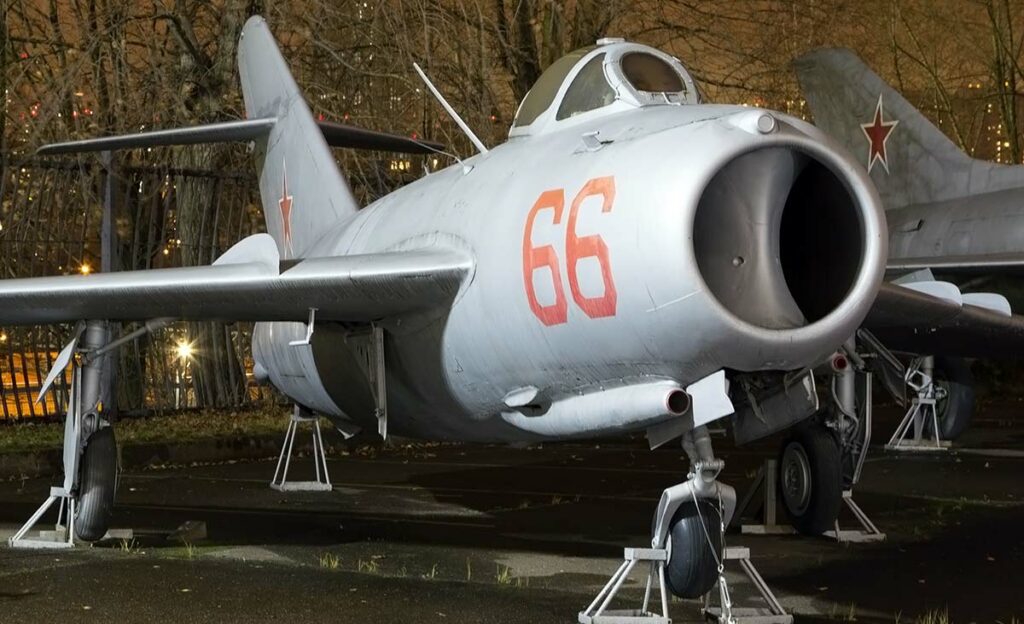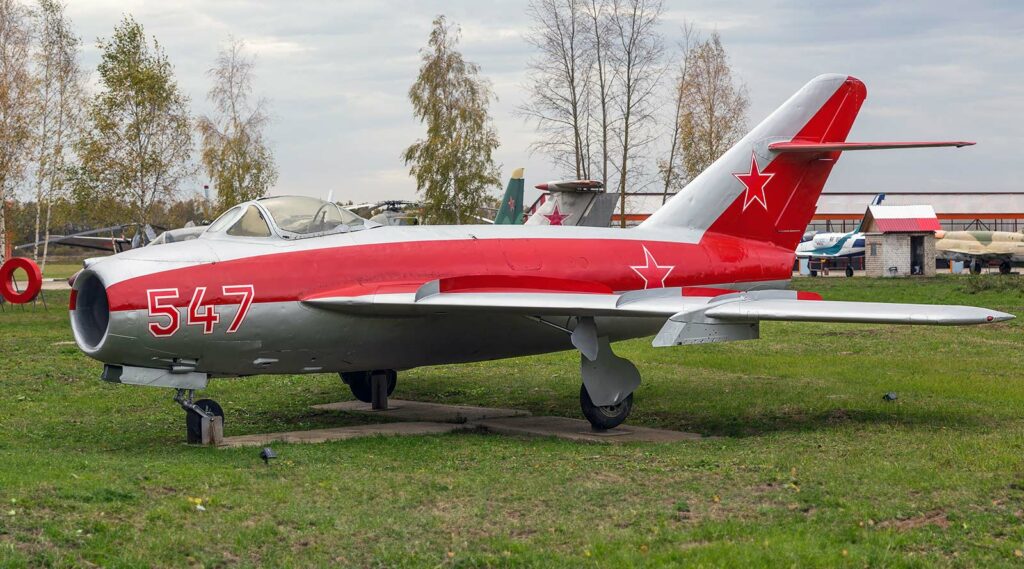The MiG-17, a Soviet jet fighter, is distinguished by its swept wings, high agility, and effectiveness in close-range air combat.
In brief
The Mikoyan-Gurevich MiG-17, developed in the Soviet Union, was a critical advancement in jet fighter technology during the Cold War. An evolution of the MiG-15, it featured improved aerodynamics, a more powerful engine, and enhanced weaponry. Known for its agility and effectiveness in dogfights, the MiG-17 played a significant role in several conflicts throughout the mid-20th century. Its swept-wing design enabled better high-speed performance, while its armament made it formidable in air-to-air combat. Widely exported, the MiG-17 influenced air combat tactics and was a benchmark for fighter development in numerous air forces globally.
The Mikoyan-Gurevich MiG-17 was a milestone in the evolution of jet-powered combat aircraft, reflecting the intense military and technological rivalry of the Cold War.

History of Development
In the early 1950s, as the Cold War escalated, the Soviet Union sought to enhance its air combat capabilities. This led to the development of the MiG-17, designed to address the shortcomings of its predecessor, the MiG-15, and to counter advanced Western fighters. The development was led by the Mikoyan-Gurevich design bureau, with Artem Mikoyan playing a key role.
The MiG-17 was designed with improved aerodynamics, a more powerful engine, and upgraded weaponry. It first flew on 14 January 1950 and quickly became a staple in the Soviet Air Force. Known by the NATO reporting name “Fresco,” the aircraft was a response to the evolving needs of air combat, characterized by higher speeds and greater maneuverability.
Design
The MiG-17’s design marked a significant advancement in jet fighter technology. It featured swept wings with a span of 31 feet 7 inches (9.63 meters) and a length of 37 feet 2 inches (11.32 meters). The aircraft was powered by a Klimov VK-1 turbojet engine, an upgraded version of the one used in the MiG-15, delivering enhanced thrust and performance.
The fighter’s design offered improved high-altitude and high-speed performance, with a top speed of 711 mph (1,145 km/h). Its armament typically included one 37 mm cannon and two 23 mm cannons, providing formidable firepower. Despite its strengths, the MiG-17 faced challenges with high-speed handling and limited range, common in fighters of that era.
Performance
The MiG-17’s performance was notable for its time. The aircraft had a maximum speed of 711 mph (1,145 km/h), a service ceiling of 54,800 feet (16,700 meters), and a range of approximately 1,230 miles (1,980 kilometers). Its climb rate and turning ability made it highly effective in dogfight scenarios.
When compared to contemporaries like the American F-86 Sabre and F-100 Super Sabre, the MiG-17 held its own, especially at lower altitudes. Its agility and powerful armament made it a formidable opponent in close-range air combat.
Variants
Several variants of the MiG-17 were produced to cater to different operational needs. These included the MiG-17F (the most numerous, with an afterburning engine), the MiG-17PF (equipped with radar for all-weather capability), and the MiG-17PM (with air-to-air missiles). Each variant offered specific enhancements, such as improved avionics, engine performance, or weaponry.

Military Use and Combat
The MiG-17 saw extensive use in various conflicts, most notably in the Vietnam War, where it engaged U.S. aircraft in numerous dogfights. Its armament and maneuverability made it a worthy adversary in aerial combat. The fighter was also used in the Middle East and Africa, participating in conflicts like the Six-Day War and the Nigerian Civil War.
The MiG-17 faced competition from Western aircraft such as the F-86 Sabre and later the F-105 Thunderchief and F-4 Phantom II. Despite facing more advanced aircraft, the MiG-17 proved effective, especially in the hands of skilled pilots. The fighter was widely exported, serving in the air forces of over 20 countries.
The MiG-17 was eventually replaced by more advanced aircraft like the MiG-21 but continued to see use in some air forces into the late 20th century.
The Mikoyan-Gurevich MiG-17 was a pivotal aircraft in the history of military aviation, embodying the technological advancements and tactical doctrines of its time. Its impact on air combat and its widespread use across various global theaters underline its significance as a jet fighter. The MiG-17’s legacy endures as a symbol of the evolution of air combat during the Cold War era.
Back to the Fighter Jet section.